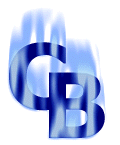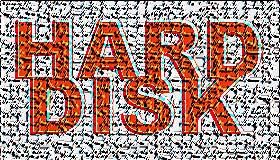A Hard Disk Drive is the main place where your data is stored. They are fast, reliable, and can hold over 6 gigabytes of information (that's a lot; about 12 CD-ROMs worth). 1. The operating system sends commands to the drive's controller which sends the command to the logic board. 2. The logic board changes commands to voltage fluctuations that move the read/write heads across the platter surfaces, the board also makes sure the spindle turning the platters moves at a constant rate. The board tells the head when to read and when to write. On a IDE (Integrated Drive Electronics) disk the disk controller is part of the logic board. 3. The spindle is connected to a motor that spins the platters, up to 8 maximum, at several thousand rotations per minute, the number of platters and composition of the material coating the platters determines the capacity. Now platters are coated wit an alloy 3 millionths on an inch thick. 4. Lead actuator pushes and pulls the bunch of read and write head arms across the surface of platters. The read/write heads slide together across the surface of platters. The heads write data from the disk controller to platters by aligning magnetic particles on the platter surface; it reads by detecting the polarity of the aligned particles. 5. Whenever a file is written or read the operating system orders the hard disk controller to go to the file allocation table (FAT). Then the operating system reads the FAT to determine in what clusters a file is or where it can store a new one. 6. After the operating system has written files to the disk it sends the read/write heads back to the FAT to record the rest of the file clusters. Writing and reading bits on a disk (does not necessarily have to be a hard disk): 1. On a disk iron particles are scattered randomly across the disk in a magnetic film. To organize particles to data a read/write which has an electric coil of wire wrapped around an iron core which moves over the disk surface. The head turns into an electromagnet that magnetizes particles in a coating. 2. The coil makes a magnetic field that, as it goes over the disk, magnetizes the iron so that the positive poles point toward the negative pole of the read/write head and of course does the opposite with the other side. 3. After one band is made a second band is made which make up a bit. The band is a: 1 when the two bands are opposite of each other. 0 when both of the bands are aligned the same direction. When the second bit is stored its polarity is opposite of the polarity of the first. 4. The head reads by identifying what the charges from the iron particles are and their direction from the current flow from the polarities of bands. This tells the head whether it is passing over a 1 or 0. |





